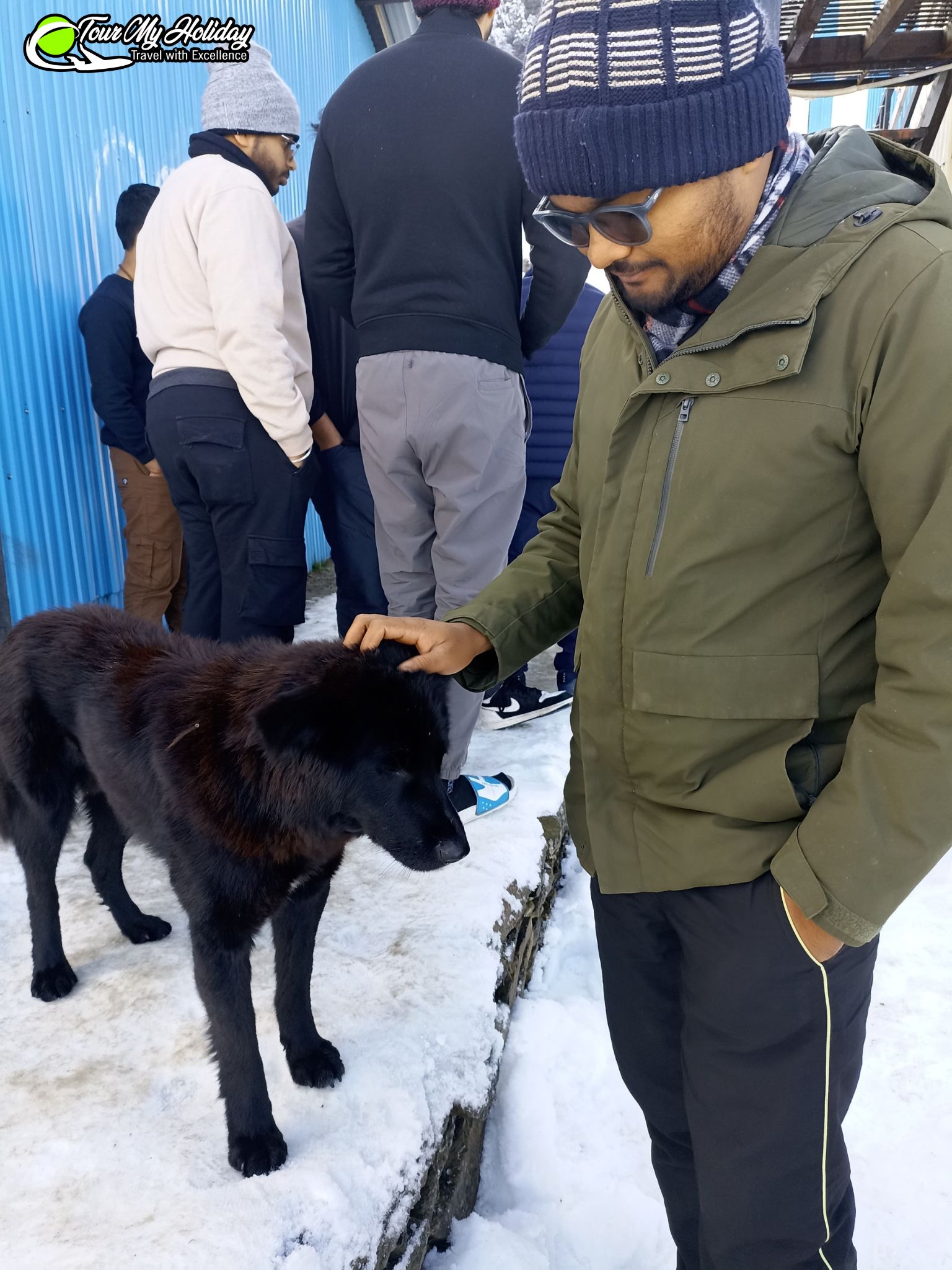Chopta Tour Package : Nestled in the Garhwal Himalayas of Uttarakhand, Chopta stands as an unspoiled paradise, offering a perfect blend of natural beauty, adventure, and spirituality. Often referred to as the “Meadow of Dreams,” this serene destination remains untouched by commercialization, making it an ideal retreat for trekkers, nature lovers, and those seeking peace away from crowded tourist spots.
Chopta serves as the base for two of the most revered treks in Uttarakhand—the Chopta Tungnath Trek, leading to the world’s highest Shiva temple, and the Chandrashila Trek, which rewards trekkers with a breathtaking 360-degree view of the Himalayan peaks. Whether you are an adventure enthusiast, a spiritual seeker, or simply someone who wants to immerse themselves in nature, Chopta has something extraordinary to offer.
This guide explores why Chopta is a must-visit destination, what makes it unique, and how you can experience its magic through well-planned Chopta tour package from Delhi.

History & Mythology of Chopta, Tungnath & Chandrashila: Ancient Legends of the Himalayas
The Sacred Legacy of Chopta’s Landscape
Nestled in Uttarakhand’s Garhwal Himalayas, the Chopta region serves as more than just a trekking destination – it represents a living tapestry of ancient Hindu mythology and medieval Himalayan history. This comprehensive exploration reveals how the Chopta Tungnath Trek and Chandrashila Trek traverse landscapes imbued with spiritual significance dating back to the Mahabharata era.
Tungnath Temple: Where Shiva’s Arms Emerged
The Panch Kedar Legend from Mahabharata
The sacred Tungnath Temple, standing at 3,680 meters as the world’s highest Shiva shrine, originates from one of Hinduism’s most profound legends:
According to the Skanda Purana, after the Kurukshetra war, the Pandavas sought Lord Shiva’s blessings to absolve themselves of fratricide. Shiva, unwilling to grant forgiveness, transformed into a bull and disappeared into the ground at five locations. These became the Panch Kedar pilgrimage sites.
Tungnath marks where Shiva’s arms (bahu) reappeared, making it:
- Second only to Kedarnath in spiritual importance among the Panch Kedar
- The only Shiva temple where Nandi faces away from the sanctum
- A site where spiritual energy is believed to be particularly potent

Architectural Marvel of the Katyuri Dynasty
Built during the 8th-9th century under the Katyuri kings, the temple showcases:
- Indigenous dry-stone masonry techniques adapted for Himalayan conditions
- Intricate carvings depicting scenes from Shaivite scriptures
- A unique three-tiered structure representing the Hindu trinity
The temple follows an ancient tradition of closing during winter, with the deity ceremonially transferred to Mukku village – a practice maintained for over twelve centuries.
Chandrashila Peak: Rama’s Mountain of Atonement
The Ramayana Connection
Chandrashila (4,000m), meaning “Moon Rock,” holds deep significance in Ramayana traditions:
After defeating Ravana, Lord Rama is said to have meditated here to cleanse himself of Brahmahatya (the sin of killing a Brahmin, as Ravana was a Brahmin by birth). The peak’s spiritual importance is evidenced by:
- Ancient rock carvings said to represent Rama’s footprints
- The 360-degree panoramic view symbolizing enlightenment
- Alignment with winter solstice sunrise over Nanda Devi
Astronomical Significance
Historical evidence suggests Chandrashila served as:
- An ancient astronomical observation site
- A meditation point for Himalayan sages studying celestial patterns
- A seasonal marker for agricultural communities in the valleys below

Chopta’s Historical Significance
Medieval Pilgrimage Routes
Chopta formed part of the traditional Kedar Khanda pilgrimage circuit mentioned in 13th-century texts. Historical records show:
- It served as a resting point for pilgrims journeying between Kedarnath and Badrinath
- The meadows were used as summer grazing grounds by Bhotiya tribes
- Trade caravans passed through carrying salt, wool and spices between Tibet and the plains
Colonial Exploration Era
British explorers first documented the region in the 19th century:
- Surveyor Richard Strachey noted the area’s unique alpine flora in 1848
- Mountaineer Eric Shipton included Chopta in his 1934 Himalayan surveys
- Temple inscriptions record donations from Garhwal kings between 15th-18th centuries
Experiencing the Legacy Today
For Spiritual Seekers
Modern pilgrims can:
- Attend morning abhishekam rituals at Tungnath using sacred spring water
- Meditate at ancient cave shrines along the trekking route
- Witness the centuries-old winter transfer ceremony of the deity

For History Enthusiasts
The region offers:
- Well-preserved Katyuri-era architectural elements
- Remnants of medieval pilgrim shelters
- Opportunities to study traditional Himalayan building techniques
Planning Your Journey
To fully appreciate this living history, consider:
- Opting for guided Chopta tour packages with knowledgeable local guides
- Visiting during shoulder seasons (May-June or September-October) for optimal conditions
- Allowing extra time to explore the cultural dimensions beyond trekking
The Chopta Tungnath Trek from Delhi and Chandrashila Trek offer more than physical challenge – they provide passage through layers of Himalayan history and spirituality that continue to shape the region’s identity today.
For those seeking to walk these ancient paths while learning their deeper significance, numerous Chopta tour packages from Delhi combine expert guidance with comfortable logistics, ensuring both an educational and adventurous experience.
Flora & Fauna of Chopta – A Biodiversity Hotspot in the Himalayas
Nestled in Uttarakhand’s Garhwal Himalayas, the Chopta region serves as an extraordinary biodiversity hotspot that forms part of the Kedarnath Wildlife Sanctuary. This pristine ecosystem, located along the Chopta Tungnath Trek and Chandrashila Trek routes, boasts an incredible variety of Himalayan flora and fauna that makes it a paradise for nature enthusiasts and wildlife researchers alike.
The region’s unique geographical position – between 2,000 to 4,000 meters elevation – creates diverse microhabitats that support numerous endemic and endangered species. As you embark on your Chopta tour package, understanding this rich biodiversity will significantly enhance your trekking experience.

The Verdant Flora of Chopta
Alpine Meadows and Their Botanical Treasures
Chopta’s sprawling meadows transform dramatically with the seasons:
Spring (March-May):
- Bursting with colorful wildflowers including:
- Brahma Kamal (Saussurea obvallata): The sacred lotus of the Himalayas
- Blue Poppy (Meconopsis aculeata): A rare high-altitude species
- Himalayan Cobra Lily (Arisaema tortuosum): Unique insect-pollinated flower
Summer (June-August):
- Lush grasses and medicinal herbs dominate:
- Himalayan Yew (Taxus wallichiana): Source of anti-cancer compounds
- Kutki (Picrorhiza kurroa): Important Ayurvedic herb
- Jatamansi (Nardostachys jatamansi): Endangered medicinal plant
Forest Ecosystems Along the Trekking Routes
The Chopta Chandrashila trek passes through several distinct forest zones:
- Oak-Rhododendron Forests (2,500-3,000m):
- Dominated by:
- Himalayan Oak (Quercus semecarpifolia)
- Rhododendron arboreum (Buransh) – Uttarakhand’s state tree
- Himalayan Maple (Acer caesium)
- Dominated by:
- Coniferous Zone (3,000-3,500m):
- Features:
- Deodar Cedar (Cedrus deodara)
- Blue Pine (Pinus wallichiana)
- West Himalayan Fir (Abies pindrow)
- Features:
- Alpine Scrub (Above 3,500m):
- Hardy species like:
- Himalayan Juniper (Juniperus recurva)
- Dwarf Rhododendron (Rhododendron campanulatum)
- Hardy species like:
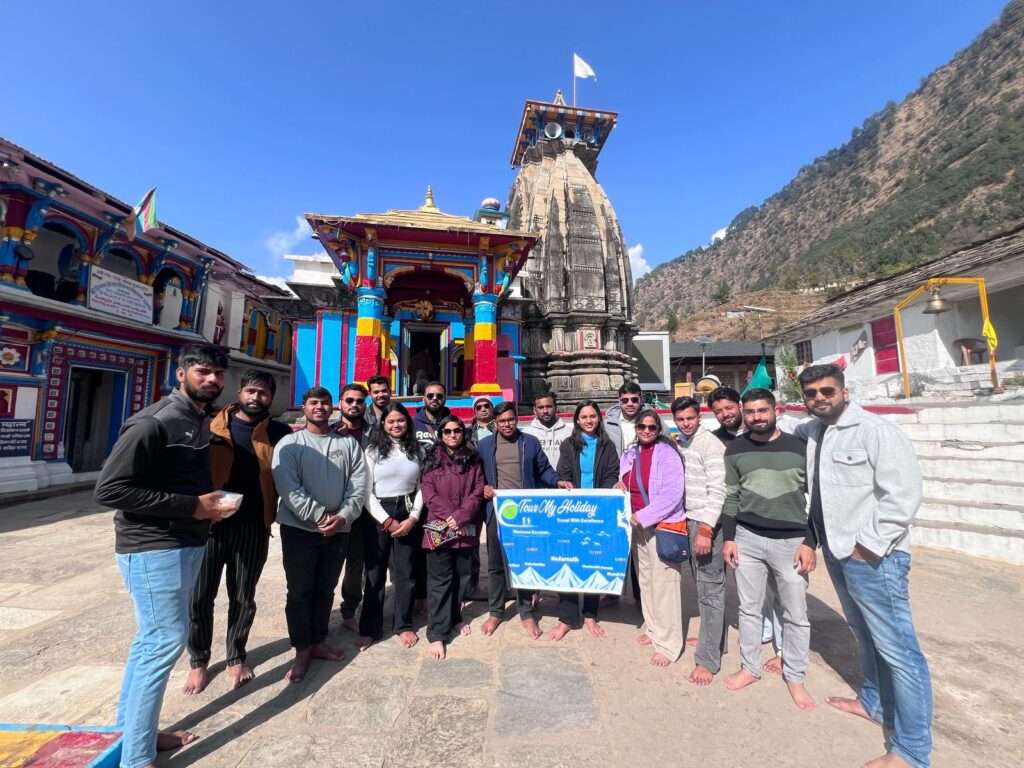
Fascinating Fauna of the Region
Mammals of the Kedarnath Wildlife Sanctuary
While trekking on your Chopta tour package from Delhi, you might encounter:
- Himalayan Musk Deer (Moschus chrysogaster):
- Endangered species hunted for its musk pod
- Best spotted at dawn near Deoria Tal
- Himalayan Black Bear (Ursus thibetanus laniger):
- Mostly seen in oak forests during summer months
- Snow Leopard (Panthera uncia):
- Rare sightings in winter above 3,500m
- Evidence often found in paw prints and scrapes
Avian Diversity: A Birdwatcher’s Paradise
Chopta’s forests and meadows host over 200 bird species, including:
Endemic and Special Species:
- Himalayan Monal (Lophophorus impejanus):
- Uttarakhand’s state bird with iridescent plumage
- Frequently seen near Bugyals (alpine meadows)
- Koklass Pheasant (Pucrasia macrolopha):
- Shy ground-dwelling bird with distinctive calls
- Himalayan Griffon (Gyps himalayensis):
- Massive vulture with 3m wingspan
Migratory Visitors:
- European Roller (Coracias garrulus): Summer visitor
- Black-Naped Oriole (Oriolus chinensis): Passage migrant
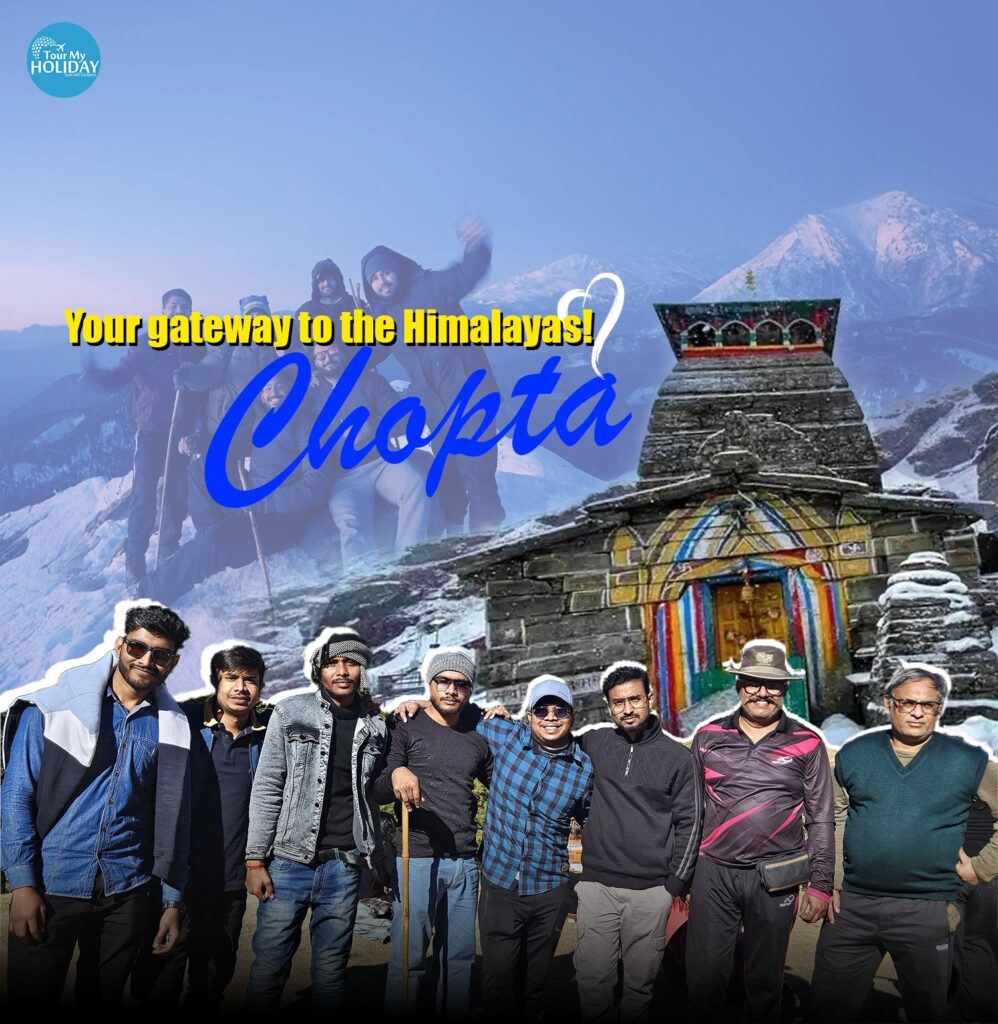
Reptiles and Amphibians
Though less visible, these play crucial ecological roles:
- Himalayan Pit Viper (Gloydius himalayanus): Only venomous snake in the region
- Himalayan Newt (Tylototriton verrucosus): Found near freshwater springs
Conservation Challenges and Ecotourism
Threats to Chopta’s Biodiversity
- Climate Change Impacts:
- Shifting vegetation zones
- Early flowering in rhododendrons affecting pollinators
- Human Pressures:
- Unregulated tourism during peak seasons
- Illegal collection of medicinal plants
- Wildlife Concerns:
- Poaching of musk deer
- Human-wildlife conflicts near villages
Responsible Trekking Practices
When booking your Chopta Chandrashila trek from Delhi, choose operators who follow:
- Leave No Trace principles
- Designated camping sites to minimize habitat damage
- Local guides who understand sensitive ecosystems

Seasonal Variations in Wildlife Sightings
Best Times for Specific Observations
Spring (March-May):
- Peak flowering of rhododendrons
- Bird migration and breeding displays
Summer (June-August):
- Highest mammal activity at water sources
- Butterfly diversity peaks
Autumn (September-November):
- Rutting season for musk deer
- Berries attract numerous bird species
Winter (December-February):
- Snow leopard signs more visible
- Special adaptations of alpine plants visible
Scientific Research in the Region
Recent studies in the Chopta Tungnath trek area have revealed:
- New species of lichens and mosses
- Climate change monitoring through phenology studies
- Camera trap documentation of elusive species

Incorporating Nature Observation into Your Trek
Recommended Activities
- Guided Nature Walks:
- Learn about medicinal plant use from local experts
- Identify animal tracks and signs
- Birdwatching Sessions:
- Early morning at Chopta meadows
- Evening at Deoria Tal
- Photography Opportunities:
- Macro photography of alpine flowers
- Landscape shots of changing vegetation zones
Why Chopta is Called the Meadow of Dreams
A Picturesque Himalayan Landscape
Chopta is renowned for its sprawling meadows, dense forests, and panoramic views of snow-capped peaks. Unlike many other hill stations that have become overcrowded, Chopta retains its pristine charm. The lush green meadows in summer and the snow-covered expanses in winter create a dreamlike setting that captivates every visitor.
The Gateway to Sacred and Scenic Treks
Chopta is the starting point for two of the most iconic treks in the region:
- Tungnath Temple Trek: A spiritual journey to the highest Shiva temple in the world, located at an altitude of 3,680 meters. The temple is one of the Panch Kedar shrines and holds immense religious significance.
- Chandrashila Summit Trek: An extension of the Tungnath trek, this takes you to an elevation of 4,000 meters, offering unparalleled views of peaks like Nanda Devi, Trishul, and Chaukhamba.
These treks are accessible throughout the year, making Chopta a year-round destination.
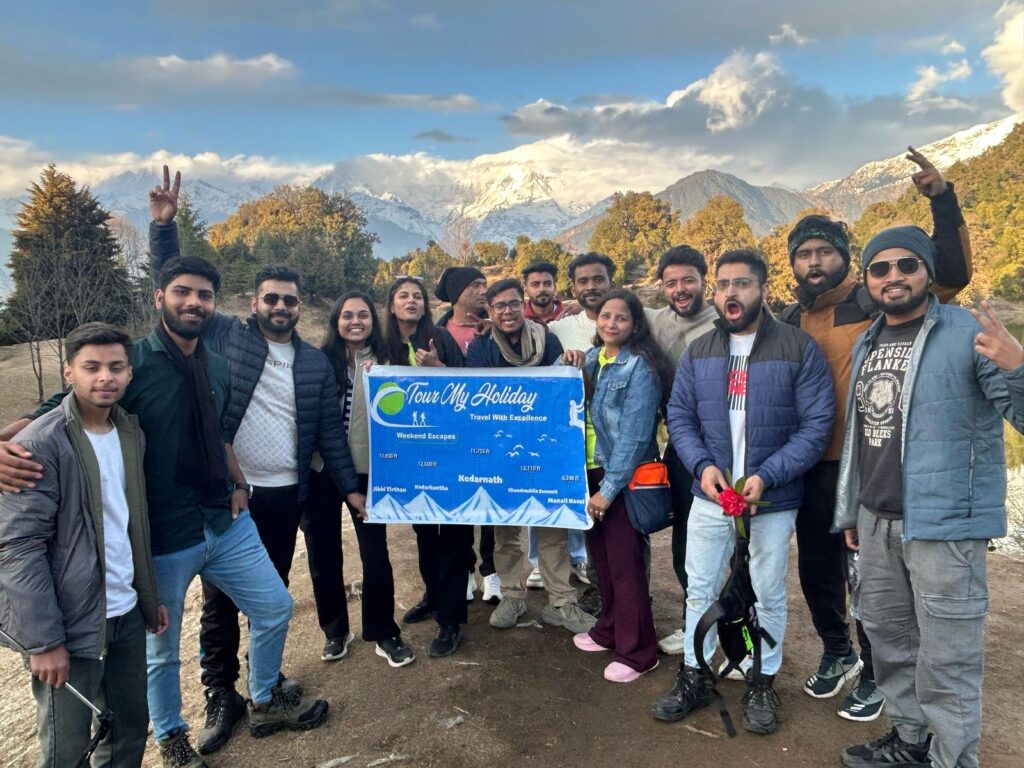
A Haven for Wildlife and Nature Enthusiasts
Chopta is part of the Kedarnath Wildlife Sanctuary, which is home to a variety of rare and endangered species. Wildlife enthusiasts can spot:
- The vibrant Himalayan Monal, Uttarakhand’s state bird.
- The elusive Musk Deer, often seen during early morning treks.
- The Himalayan Black Bear, which inhabits the dense forests surrounding the area.
The region is also rich in flora, with rhododendron forests blooming in vibrant hues during spring.
A Destination Steeped in Mythology and Spirituality
Beyond its natural beauty, Chopta holds deep spiritual significance. The Tungnath Temple is believed to have been established by the Pandavas, and the Chandrashila Peak is associated with legends of Lord Rama meditating here after his victory over Ravana. These elements add a mystical charm to the trekking experience.
What Makes Chopta Unique Compared to Other Himalayan Destinations?
While destinations like Shimla, Manali, and Mussoorie are popular among tourists, Chopta offers a distinct experience:
- Tranquility: Unlike commercialized hill stations, Chopta remains peaceful and uncrowded.
- Accessibility: The treks are moderate, making them suitable for beginners as well as seasoned trekkers.
- Biodiversity: The region’s rich wildlife and flora set it apart from other trekking destinations.
- Spiritual Significance: The combination of adventure and spirituality is rare in most Himalayan spots.

Exploring Chopta: Tour Packages vs. Independent Travel
Opting for a Chopta Tour Package from Delhi
For those seeking a hassle-free experience, Chopta tour packages are an excellent choice. These packages typically include:
- Transportation: Round-trip travel from Delhi in comfortable vehicles.
- Accommodation: Stay in camps or homestays with basic amenities.
- Meals: Nutritious meals to keep you energized during the trek.
- Guided Treks: Experienced guides to ensure safety and enrich your journey with local knowledge.
Popular packages include:
- 2-Day Chopta Tungnath Trek from Delhi: Ideal for those short on time.
- 4-Day Chopta Chandrashila Trek from Delhi: A more immersive experience, including Deoria Tal.
Planning an Independent Trip
For seasoned travelers who prefer flexibility, organizing a trip independently is possible. However, it requires careful planning:
- Transport: Buses or trains to Haridwar/Rishikesh, followed by a taxi to Chopta.
- Permits: Ensure you have the necessary permits for trekking in the wildlife sanctuary.
- Accommodation: Book camps or homestays in advance, especially during peak seasons.
While independent travel offers freedom, a Chopta tour package ensures a seamless experience, particularly for first-time visitors.

Must-Do Experiences in Chopta
- Witness the Sunrise from Chandrashila Summit
The view of the sun rising over the Himalayan peaks is a once-in-a-lifetime experience. - Camp Amidst Nature
Spend a night under the stars in Chopta’s meadows, with bonfires and local stories adding to the charm. - Explore Deoria Tal
This serene lake, reflecting the surrounding peaks, is perfect for photography and relaxation. - Visit Tungnath Temple at Dawn
Experience the spiritual aura of the temple before the crowds arrive. - Birdwatching and Wildlife Spotting
Keep an eye out for the Himalayan Monal and other rare species.
Safety & Altitude Sickness Prevention for Chopta Chandrashila Trek
The Chopta Tungnath Trek and Chandrashila Summit Trek take trekkers to elevations between 2,680m to 4,000m, making altitude sickness prevention and safety precautions essential components of trip planning. This comprehensive guide covers all aspects of mountain safety for those booking Chopta tour packages from Delhi, ensuring a secure and enjoyable Himalayan experience.
Understanding Altitude Sickness (Acute Mountain Sickness – AMS)
What Causes AMS on the Chopta Chandrashila Trek?
As you ascend during your Tungnath Chandrashila Trek from Delhi, the decreasing oxygen levels (about 40% less than sea level at 4,000m) can lead to:
- Reduced oxygen saturation in blood
- Lower atmospheric pressure
- Faster dehydration
- Changes in cerebral blood flow
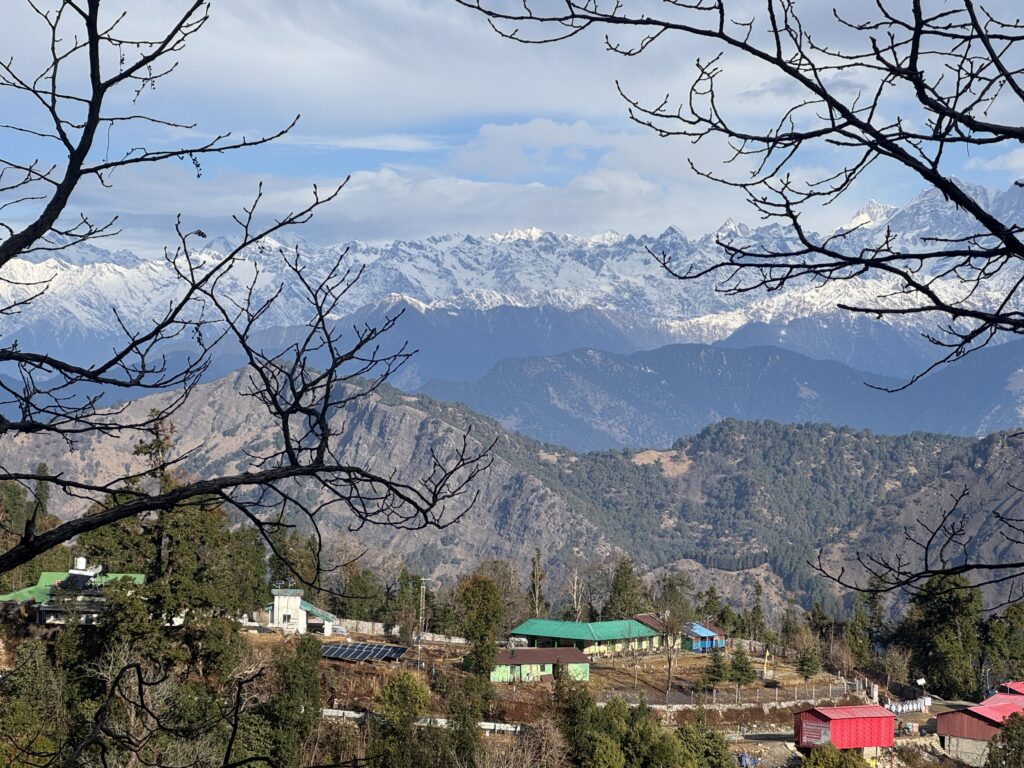
Symptoms to Monitor
Mild AMS (Common in 25% of trekkers):
- Headache (most common symptom)
- Nausea/loss of appetite
- Fatigue
- Dizziness
- Difficulty sleeping
Severe AMS (Requires immediate descent):
- Ataxia (loss of coordination)
- Severe headache unrelieved by medication
- Confusion/disorientation
- Fluid buildup in lungs (HAPE) or brain (HACE)
Prevention Strategies for Altitude Sickness
Gradual Acclimatization Protocol
For those booking Chopta tour packages, follow this elevation profile:
Day 1: Delhi (216m) → Rishikesh (372m)
Day 2: Rishikesh → Chopta (2,680m)
Day 3: Chopta → Tungnath (3,680m) → Return to Chopta
Day 4: Chopta → Chandrashila (4,000m) → Return to lower altitude
Hydration Guidelines
- Drink 4-5 liters of fluids daily
- Monitor urine color (should be pale yellow)
- Include electrolytes (ORS packets recommended)
- Limit caffeine and alcohol
Medication Options
Preventive Medications:
- Acetazolamide (Diamox) 125mg twice daily (start 1 day before ascent)
- Consult physician before use
Symptom Relief:
- Ibuprofen for headaches
- Ondansetron for nausea
- Avoid sleeping medications

Essential Safety Equipment for the Trek
Personal Gear Checklist
Clothing System:
- Base layer (moisture-wicking)
- Insulating mid-layer (fleece/down)
- Waterproof outer shell
- Thermal socks and gloves
Safety Equipment:
- Headlamp with extra batteries
- Emergency blanket
- Whistle
- Basic first aid kit
Technical Gear:
- Trekking poles (reduce joint impact by 25%)
- Microspikes (for winter treks)
- Portable oxygen (optional for sensitive individuals)
Weather-Related Hazards and Prevention
Temperature Extremes
Daytime: 10°C to 20°C (summer)
Nighttime: -5°C to 5°C (can drop to -15°C in winter)
Prevention:
- Layer clothing system
- Watch for early signs of hypothermia
- Protect extremities from frostbite
Monsoon Risks (July-August)
- Landslide-prone areas
- Leech encounters
- Reduced visibility
Safety Measures:
- Check weather forecasts
- Avoid trekking during heavy rain
- Carry salt for leeches

Trail Safety and Navigation
Route-Specific Hazards
Chopta to Tungnath (3.5km):
- Well-marked trail
- Moderate incline
- Some exposed sections
Tungnath to Chandrashila (1.5km):
- Steeper ascent (35-40° incline)
- Rocky terrain
- Potential ice patches (winter)
Navigation Tips
- Follow clearly marked paths
- Stay with your group
- Carry physical map as backup
- Download offline maps
Emergency Preparedness
Communication Plan
- Inform someone of your itinerary
- Note emergency numbers:
- Chopta Forest Office: [Number]
- Nearest Hospital (Ukhimath): [Number]
- Satellite phone recommended for independent trekkers
Evacuation Protocols
Mild AMS:
- Stop ascent
- Rest at current altitude
- Hydrate
- Consider descent if no improvement
Severe AMS:
- Immediate descent (500-1000m)
- Oxygen if available
- Emergency evacuation

Physical Preparation for the Trek
Fitness Requirements
Minimum Standards:
- Ability to walk 10km with 500m elevation gain
- Comfortable carrying 5-7kg backpack
- Previous high-altitude experience beneficial
Training Regimen (8-12 weeks pre-trek)
Cardiovascular:
- 45-60 minute brisk walks 4x/week
- Stair climbing with weight
- Weekend hikes with elevation gain
Strength Training:
- Squats and lunges
- Core strengthening
- Calf raises
Food and Water Safety
Hydration Management
- Drink before feeling thirsty
- Monitor urine output
- Balance water with electrolytes
Nutrition at Altitude
Recommended Foods:
- High-carbohydrate meals (60-70% of calories)
- Easily digestible proteins
- Frequent small meals
Foods to Avoid:
- Excessive fats
- Heavy, greasy meals
- Unpeeled raw vegetables
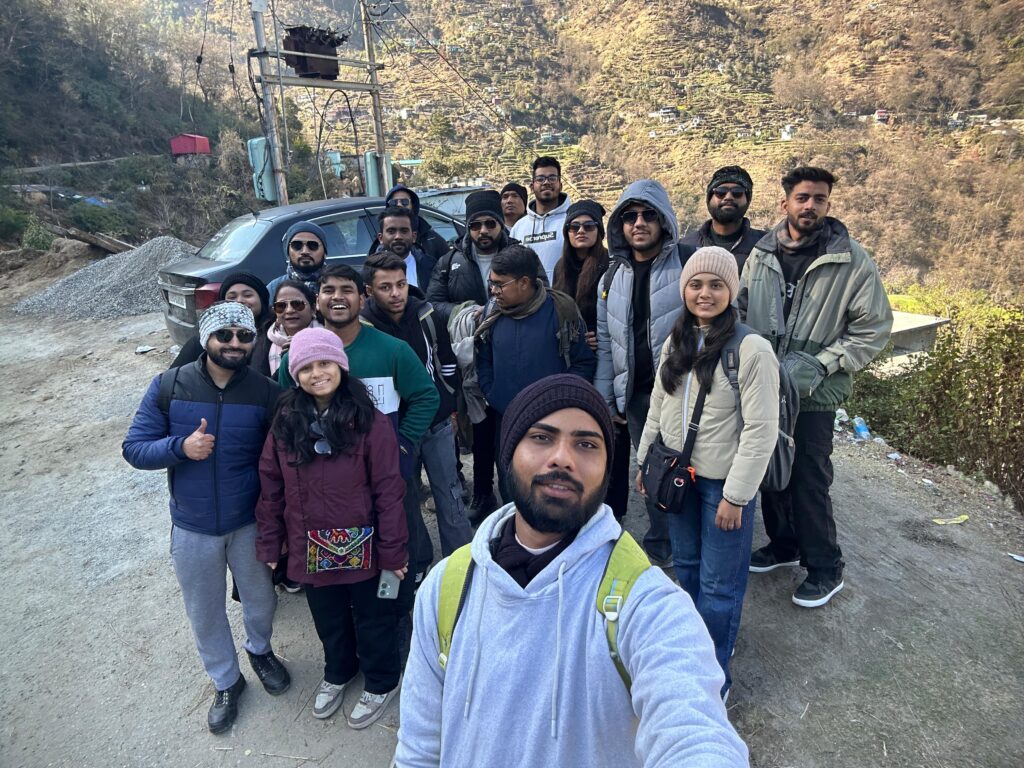
Special Considerations for Winter Treks
Additional Hazards
- Icy trails
- Avalanche risk on certain slopes
- Extreme cold temperatures
Winter-Specific Gear
- Insulated waterproof boots
- Thermal layers
- Hand/foot warmers
- Sunglasses with UV protection
Choosing a Safe Tour Operator
Red Flags to Avoid
- No proper acclimatization schedule
- Unqualified guides
- Lack of emergency equipment
- Poor safety record
Questions to Ask Before Booking
- What is your guide-to-trekker ratio?
- What emergency equipment do you carry?
- What is your evacuation protocol?
- Can I see your safety certifications?
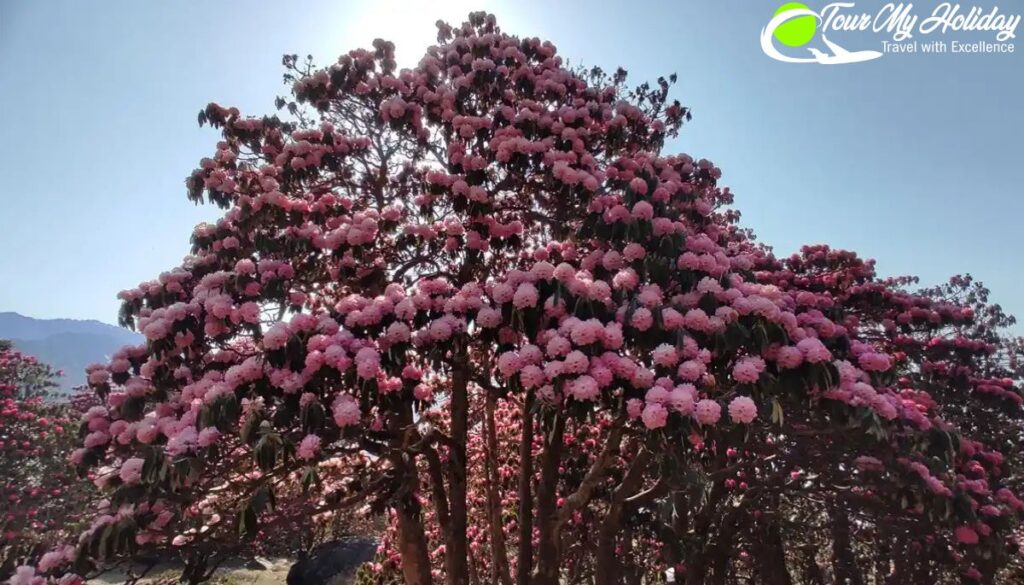
Psychological Aspects of High-Altitude Trekking
Mental Preparation
- Understand the challenge
- Prepare for discomfort
- Develop positive self-talk
- Learn basic meditation techniques
Group Dynamics
- Stay with your pace group
- Communicate openly with guides
- Watch for signs of distress in others
Post-Trek Health Monitoring
Potential After-Effects
- Continued mild headache
- Fatigue
- Changes in sleep patterns
When to Seek Medical Attention
- Persistent neurological symptoms
- Cough with pink frothy sputum
- Severe fatigue lasting >48 hours
Choosing the Right Chopta Tour Package
When selecting a Chopta tour package, consider the following:
- Inclusions: Check if transport, meals, accommodation, and guides are included.
- Group Size: Smaller groups ensure a more personalized experience.
- Season: Summer (April-June) and autumn (September-November) are ideal for clear views, while winter (December-February) offers snow trekking.
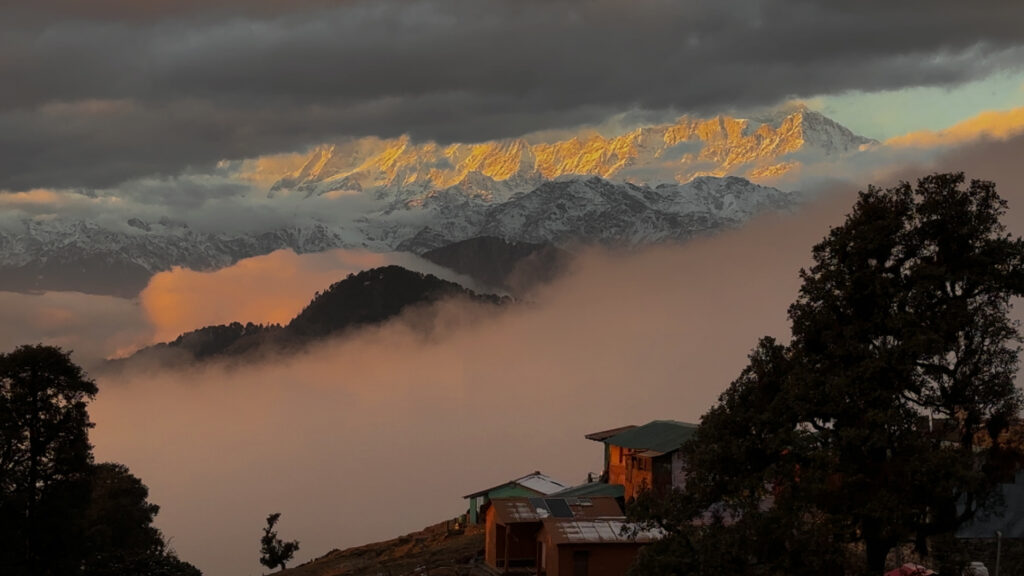
FAQs About Chopta
What is the best time to visit Chopta?
The best time to visit Chopta is from March to June for pleasant weather and from December to February for snowfall and winter trekking.
How to reach Chopta from Delhi?
You can reach Chopta from Delhi by bus, train, or car. The nearest railway station is in Haridwar or Rishikesh, and the nearest airport is Jolly Grant Airport in Dehradun. From there, you can hire a cab or take a bus to Chopta.
What are the top attractions in Chopta?
The must-visit places in Chopta include Tungnath Temple, Chandrashila Peak, Deoriatal Lake, and the lush meadows of Chopta, offering stunning Himalayan views.
Is Chopta good for trekking?
Yes, Chopta is a paradise for trekkers. The Chopta Tungnath trek from Delhi and the Chopta Chandrashila trek from Delhi are two of the most scenic treks in Uttarakhand.
Where can I stay in Chopta?
There are cottages, campsites, and hotels available for stay in Chopta. Divine Chopta is one of the best cottage accommodations, offering bonfire nights, music, and hot water facilities.
What is included in a Chopta tour package?
A Chopta tour package from Delhi usually includes transportation, accommodation, meals, sightseeing, and guided treks to Tungnath and Chandrashila. Packages vary based on preferences and budget.
Is there snowfall in Chopta?
Yes, Chopta receives heavy snowfall between December and February, making it a great winter destination for snow lovers and trekking enthusiasts.
How difficult is the Chopta Chandrashila trek?
The Chopta Chandrashila trek is a moderate trek, ideal for beginners and experienced trekkers. It takes about 4-5 hours to reach Chandrashila via Tungnath Temple.
Can I visit Chopta with family?
Absolutely, Chopta is a family-friendly destination with easy treks, breathtaking landscapes, and comfortable stays like Divine Chopta, making it an ideal getaway for all age groups.
What should I pack for a Chopta trip?
For a summer trip, pack light woolens, comfortable trekking shoes, and sunscreen. For a winter trip, carry heavy woolens, gloves, thermal wear, and snow-resistant trekking boots to stay warm and comfortable.

